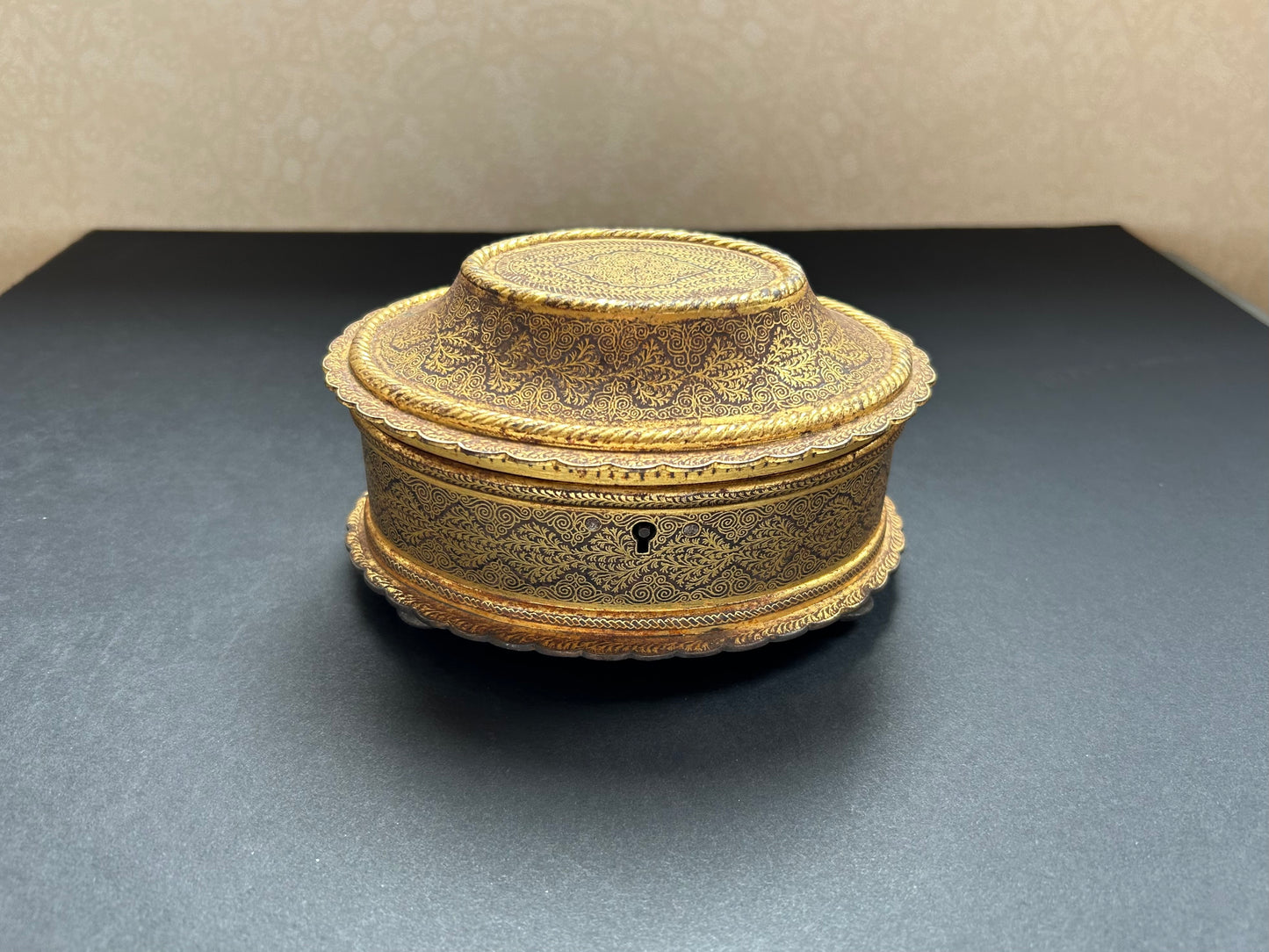Indian Koftgari Box, Nineteenth Century
Indian Koftgari Box, Nineteenth Century
Couldn't load pickup availability
An exquisite Indian Koftgari work box, or jewelry box, circa 1900, in oval shape. Featuring very fine, gold thread decoration with three silvered bun feet and a silvered base. The lid opens to reveal a worn, red velvet interior, typical of luxury items of the period.
This box is very similar to one currently held in the collection of Mehrangarh Museum Trust in Rajasthan. No key.
Koftgari is a type of Indian damascene technique that was brought to India by Persian craftsmen with Mughal rulers in the 16th century. It is an overlay art in which an iron surface is cut with crosshatches. Silver or gold wire is then pressed into the surface with a special tool. The gold is bound to the the surface of the iron through pressing, burnishing, and polishing.
From the 16th to the 19th century, Koftgari was employed almost exclusively in India for the decoration of weapons and sword hilts. In the 19th century, the type of objects with Koftgari decoration expanded to include a variety of decorative and household items, such as candlesticks, vases and boxes.
A truly beautiful example of this art form.
This box is very similar to one currently held in the collection of Mehrangarh Museum Trust in Rajasthan. No key.
Koftgari is a type of Indian damascene technique that was brought to India by Persian craftsmen with Mughal rulers in the 16th century. It is an overlay art in which an iron surface is cut with crosshatches. Silver or gold wire is then pressed into the surface with a special tool. The gold is bound to the the surface of the iron through pressing, burnishing, and polishing.
From the 16th to the 19th century, Koftgari was employed almost exclusively in India for the decoration of weapons and sword hilts. In the 19th century, the type of objects with Koftgari decoration expanded to include a variety of decorative and household items, such as candlesticks, vases and boxes.
A truly beautiful example of this art form.
SKU:
View full details








